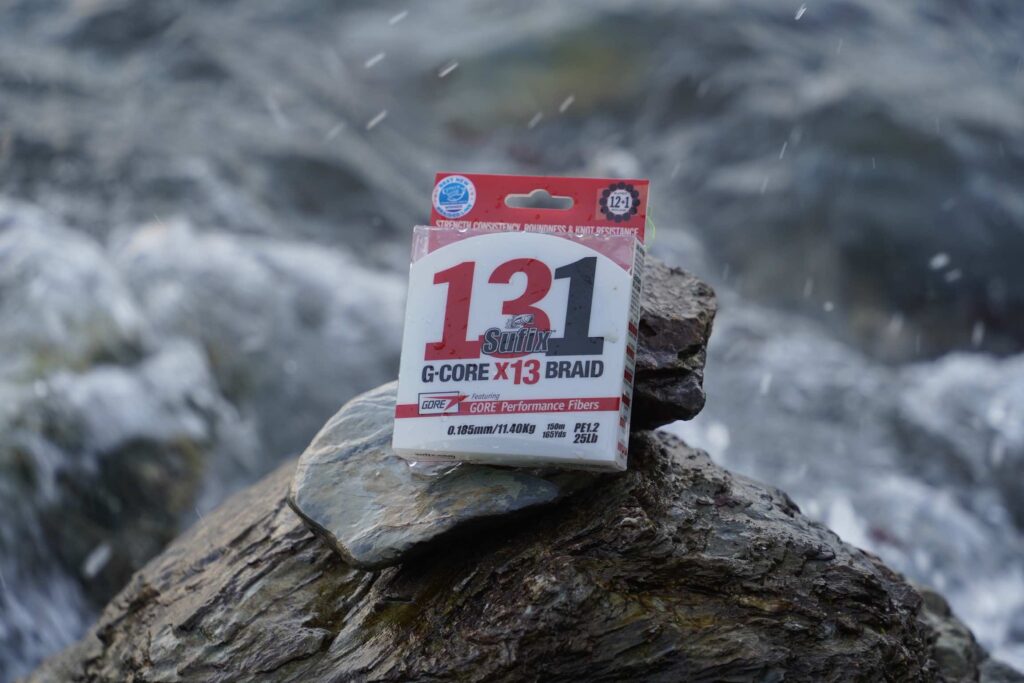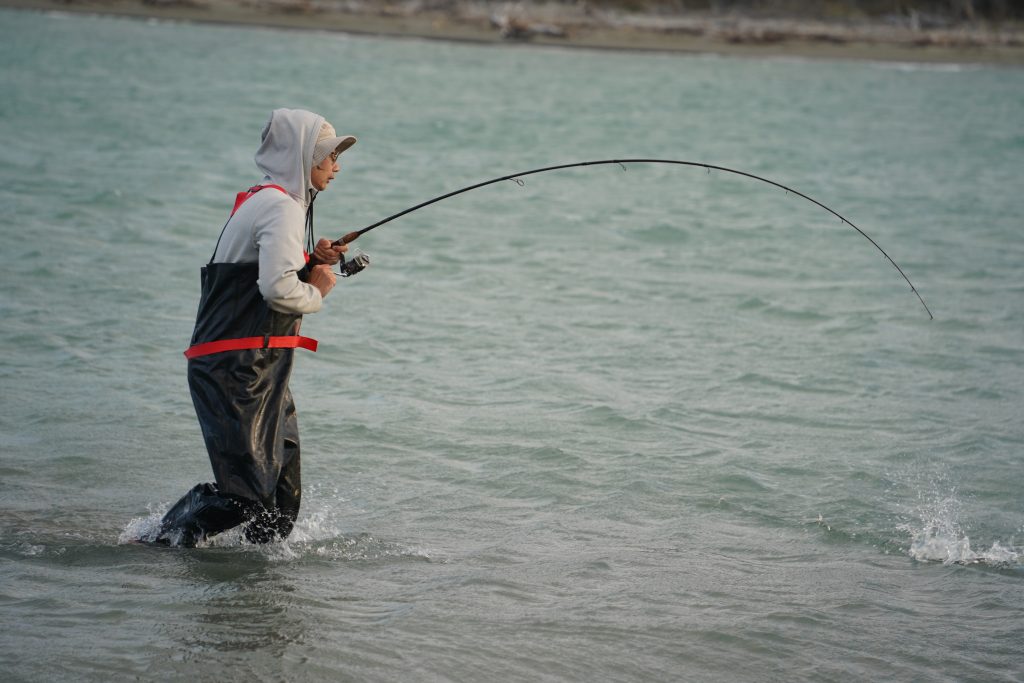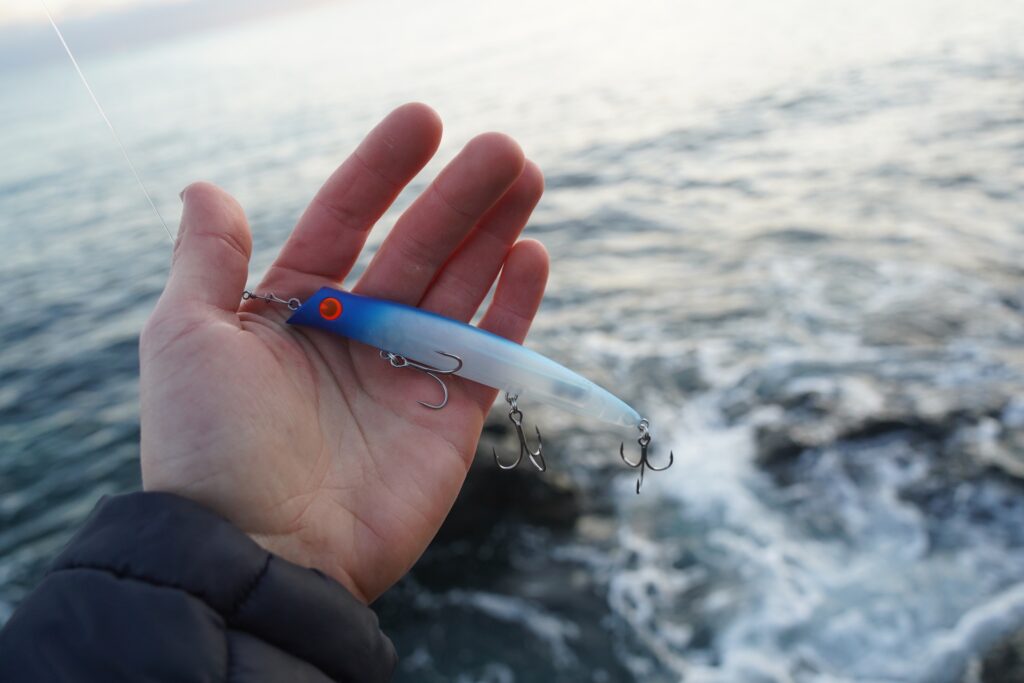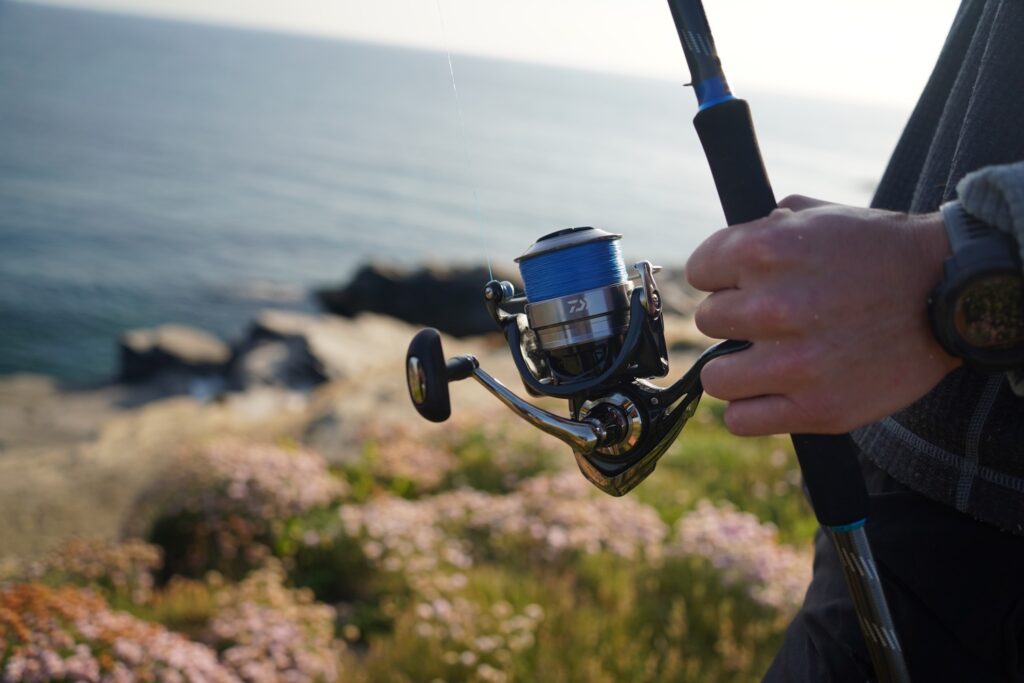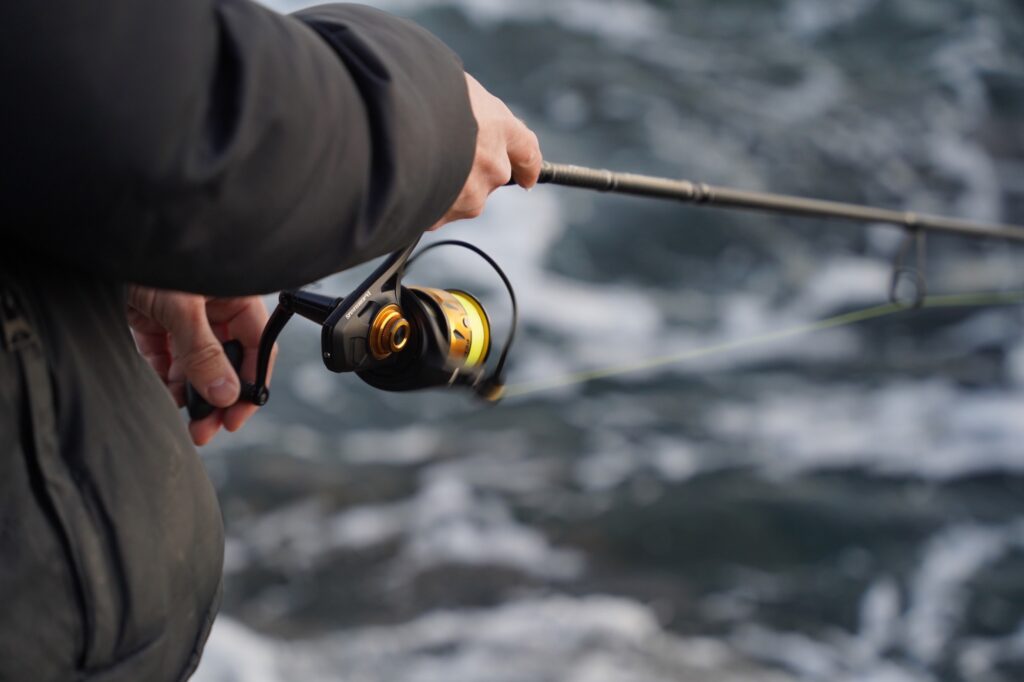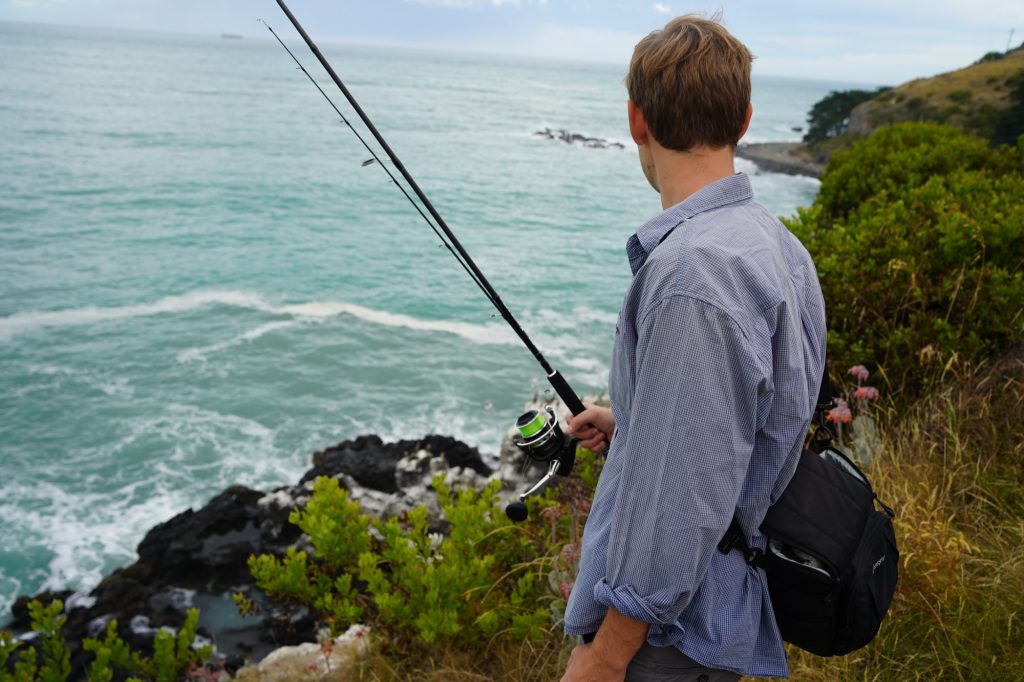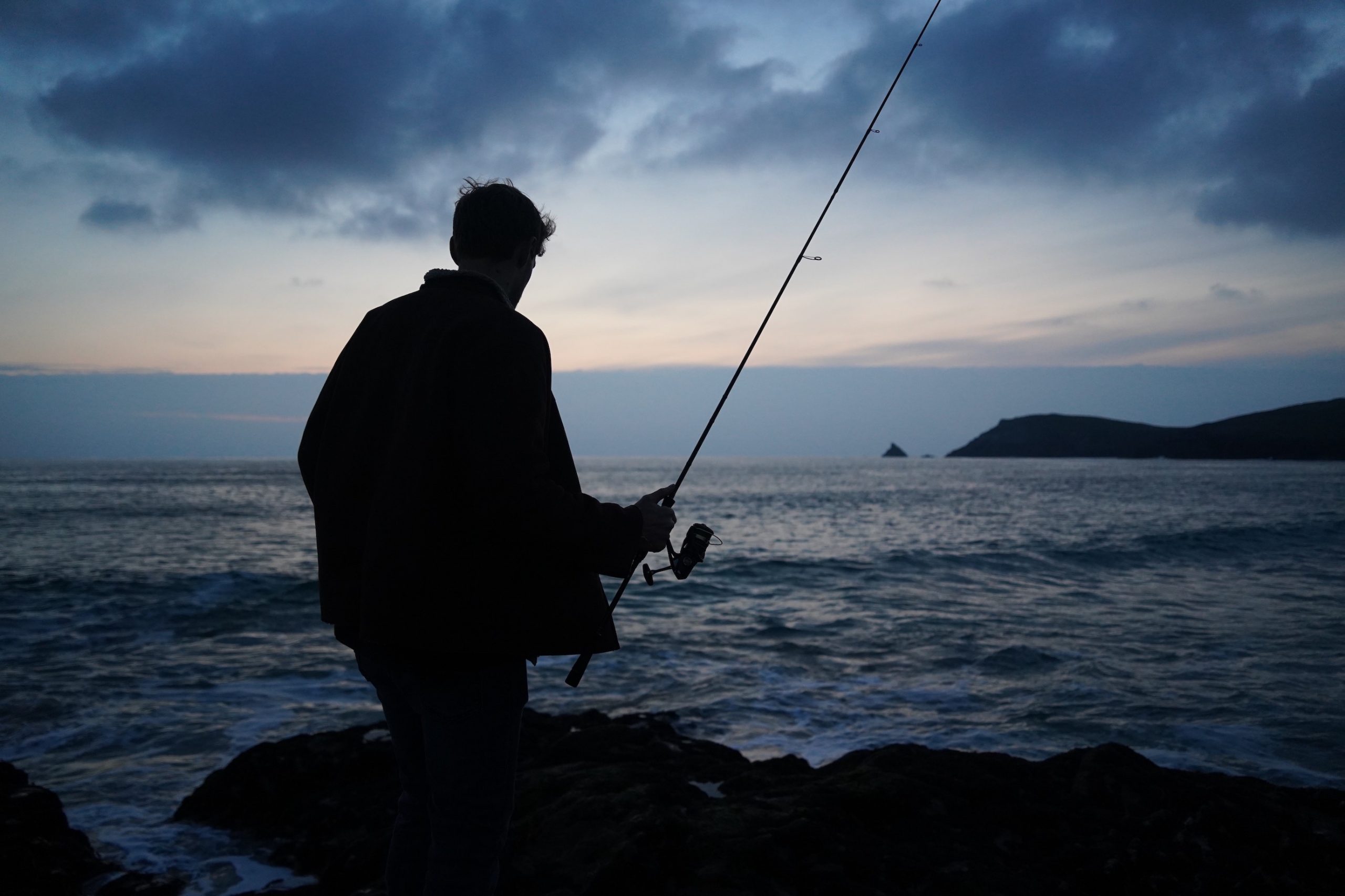
Lure Fishing UK | Beginners Guide & Set Up
This guide to lure fishing for beginners covers the fundamentals of targeting UK fish species with a lure fishing setup. We will begin with what lure fishing is, the basic lure fishing setup and then get to practical tips for beginners.
This page is part of the Amazon associates programme and may earn commissions on purchases.
Beginners guide to lure fishing: where to start?
Who knows who our first ancestor was to tie a feather to a makeshift hook and return home with a fish, wagging on the end of some archaic piece of string.
Putting the fish down next to the fire that night, they would have cast an animated shadow as they told the first story of the fish that got away. A billion fish-that-got-away stories later, we’re still gripped by lure fishing. Today, our methods and lures have evolved with us to reflect the incredible variety of fish we try to catch.
Fishing means pulling the lever on a living slot machine. You might pull a monster from the unseen world. Or, you might catch nothing at all. The sport is grounded in anticipation. It could be something splashing in the corner of your eye, or a seabird crash diving offshore… Every little tap could be a fish.
“The charm of fishing is that it is the pursuit of what is elusive but attainable, a perpetual series of occasions for hope.”
– John Buncan
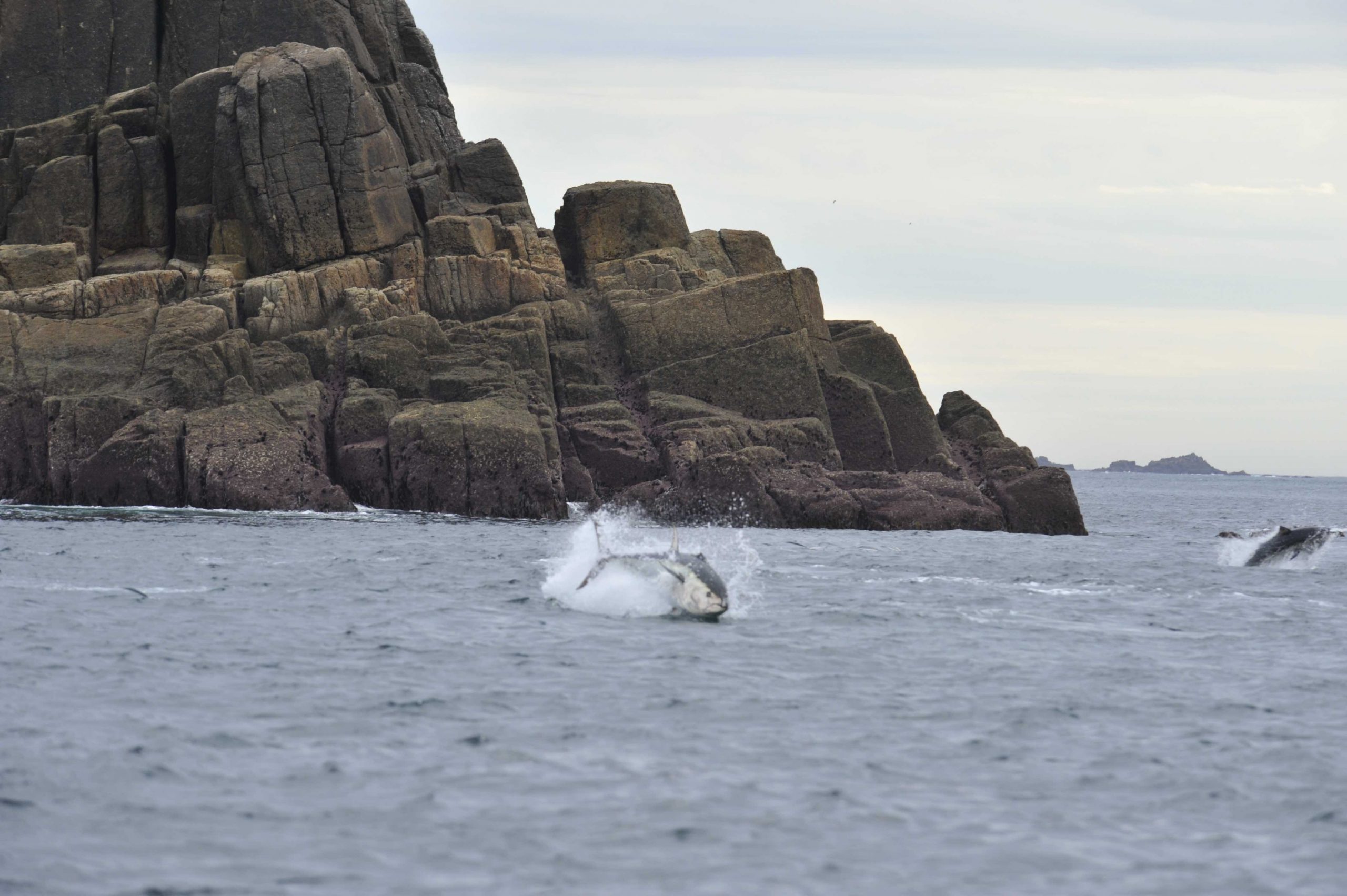
The sea will not conform to our expectations.
You may expect to catch a mackerel but catch squid. You may know every local fish species by heart and expect to see nothing new, but then witness a lone whale surface 50m offshore. You may see a cormorant eating a sea horse, or a fat bull seal calmly eating what you hoped to catch.
I hope we never figure out how to make sense of all the factors that determine if we will catch a fish. There is so much randomness, and that’s part of what we go to the sea for. How can we know if it was changing our lure that caught us the fish? That’s just one of thousands of factors at play. It’s the same problem faced by ecologists looking at datasets. How can you isolate factors in the natural world when everything is interconnected? We can only look for patterns.
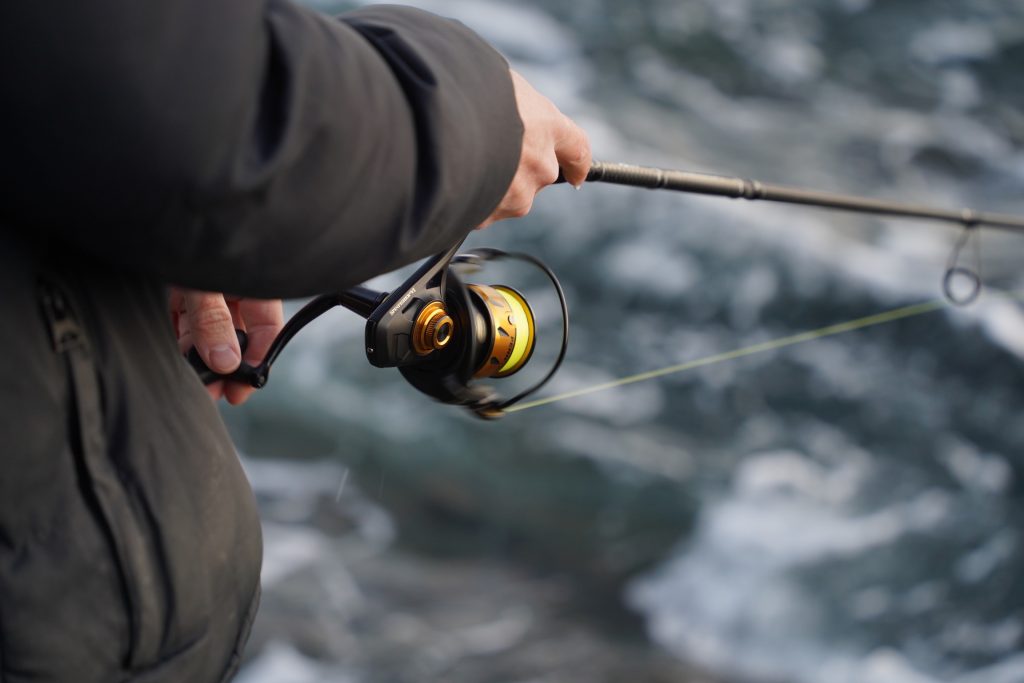
The skill of lure fishing is making increasingly informed guesses and controlling the things we can.
Thankfully, there are some things we can know. Tides, weather, seasons and the habits of each species can be understood pretty well. There are also lures that give you advantages in specific situations. Part of lure fishing is piecing together this puzzle. We can use BBC Tides & BBC Weather and pay attention to what the conditions are when we’re catching fish. We can use Navionics web app to find deep water shore fishing marks or rough ground. And you can use the guides on this website to find tips on each species and to find the best lure fishing tackle.
“It is better to be lucky. But I would rather be exact. Then when luck comes you are ready.”
Ernest Hemingway, The Old Man and the Sea
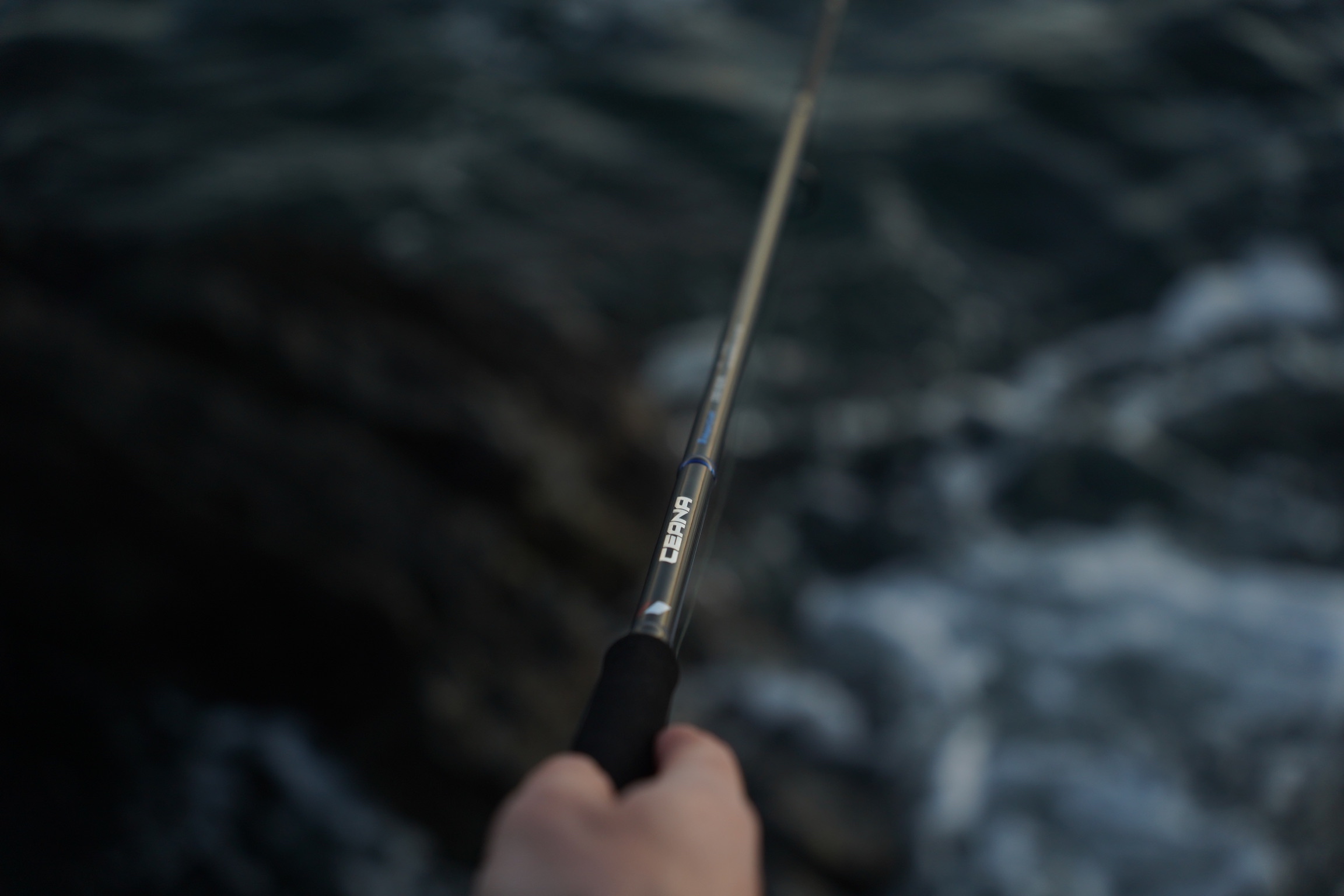
How lure fishing has changed the last two decades
In the early 2000’s, most lure fishing from the shore in the UK looked pretty similar.
Sea anglers would head out with a large reel and relatively stiff 10ft spinning rod. They would use thick monofilament line. For terminal tackle, they would use lures like red gills, wedges or a sidewinder sandeel and a few packs of mackerel feathers. The rods were designed for casting heavier weights or larger plugs and most anglers would have to use a lead weight as well as a lure just to be able to cast out.
Things have changed a lot in the UK, with a few tackle shop owners and lure fishing guides popularising the use of Japanese and US imports for lure fishing in British waters.
If you go to a harbour wall in summertime and you meet somebody fishing the pre-2000’s way and somebody fishing with modern lure fishing kit, you will see that they are completely different approaches.
Modern lightweight lure rods allow anglers to fish with quality light lines and a larger range of lures than before. This offers many advantages, especially for catching predatory species like bass.
Most anglers will choose to focus on catching mackerel with feathers in summertime, because they are the easiest species to catch when they are in. A modern lure fishing set up on the other hand allows you to cast a huge range of single lures without additional weight. This allows you to target an unprecedented range of species.
Lure fishing gear
An example of an all-round modern lure fishing set-up at a entry-level price point: the Penn Wrath II Labrax, with a 3000 Daiwa Crossfire, and 24lb Berkley Sick X8 with fluoro. A couple of good lures to use with this set-up would be: the Savage Gear Sandeel Weedless, and a metal lure.
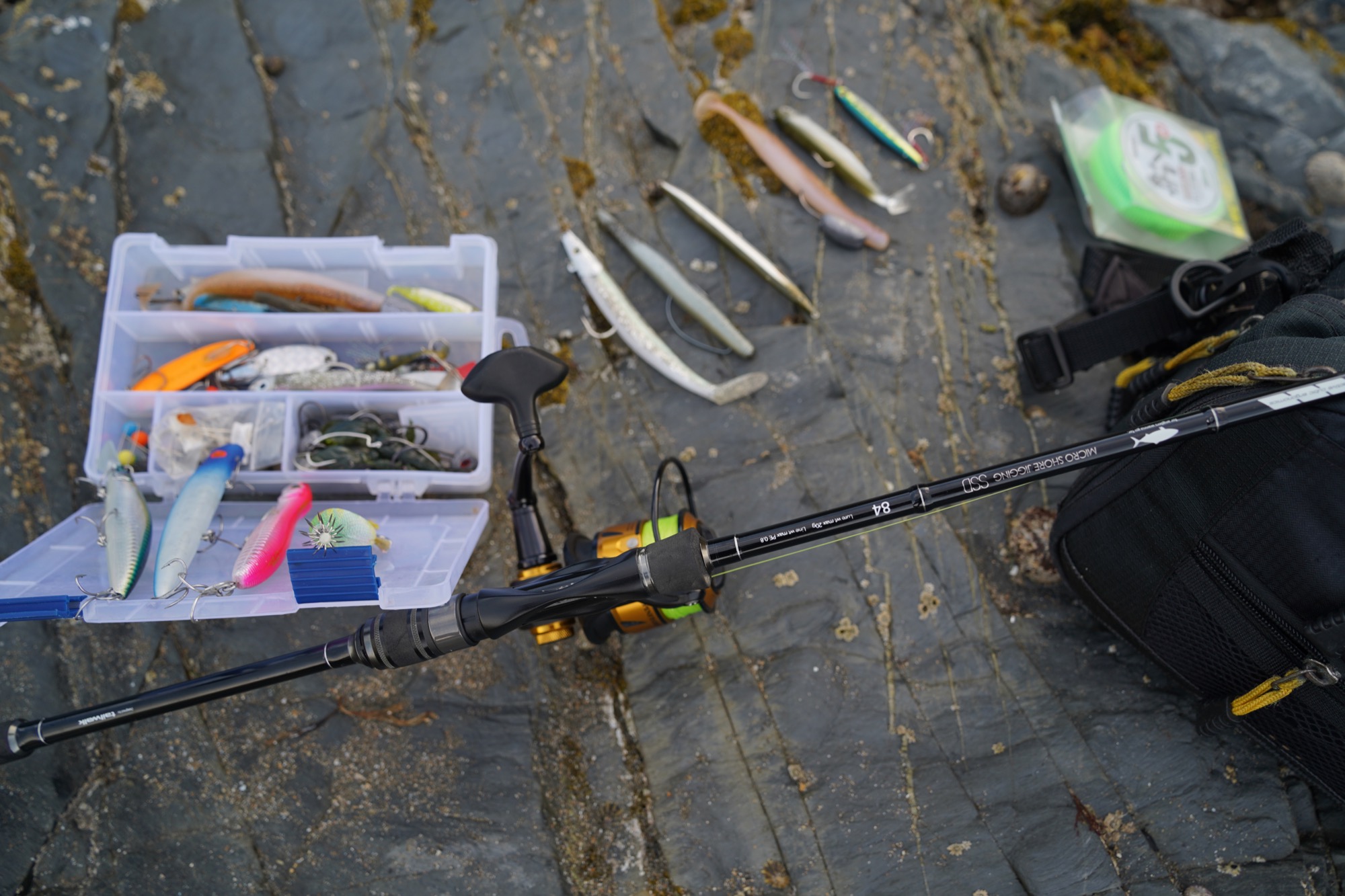
Lure Rod & Reel Combo
Most lure fishing in the UK is best done with a 7-10ft rod with a max casting weight of about 30-42g. A lure rod like this can be used for a huge range of species from jigging for cod from shores of Scotland to Pike fishing in lakes or catching mackerel or bass in summer from the rocks. A rod like this allows you to use a huge range of unweighted lures and is highly versatile.
Full guide’s to choosing a rod and a spinning reel.

Lure fishing lines
Braid casts further and improves bite detection. You can easily learn to tie a leader knot in an hour on Youtube if the braid and leader is in front of you. If you decide not to use braid for convenience of not learning the knot, it limits your fishing a fair bit.
Guide to choosing braided fishing line

Lure fishing tackle
You need a selection of hard and soft lures that are within the casting range of your rod, to cover you in different scenarios and for different species and conditions.
The most versatile lure is the Fiish Minnow, which is as popular in smaller sizes for perch as it is for bass. If you have one of those and a metal casting jig you can catch all the main sport fishing species in the UK in both salt and fresh water.
If you’re looking to buy a beginners lure fishing set up, we have a guide to choosing your first lure fishing set up.
View FishMag’s top ranked lures

Lure fishing tips
Once you have the basic knowledge, knots and casting down, most of the useful information is hyper-specific to a local area. For instance, there may be certain underwater features that hold specific species at specific times. For instance, a drop off in an estuary where the water suddenly gets deeper. This type of knowledge takes time to accumulate, or money to spend on a local guide. This is why even if you are experienced at fishing your home turf it can still be challenging fishing abroad in unfamiliar waters. This type of knowledge aside, we will focus on fundamentals.
USE STRONG, CLEAN KNOTS
One of the best knots for tying on lures is the grinner knot. It is much stronger than the blood knot, which is more popular. The blood knot is ok if you’re using 20lb mono line and targeting mackerel. Otherwise, avoid it and learn the grinner knot instead. Here’s a useful link to a step-by-step guide by Ultima.
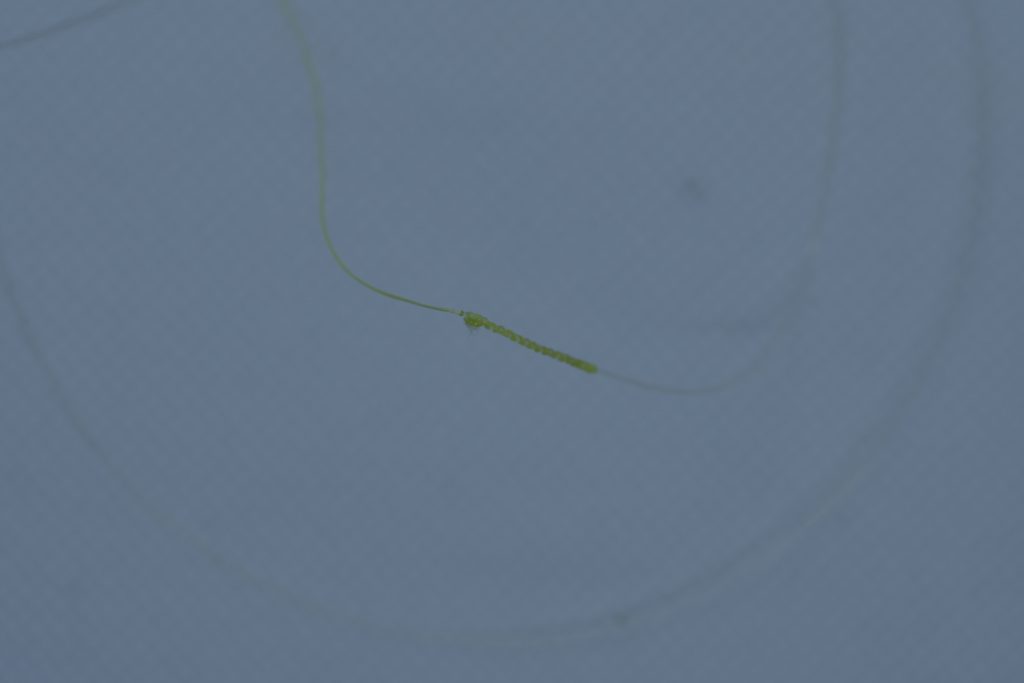
The best knot by far for tying a leader to a braided mainline is the FG knot. It is easier to learn than it looks in some videos, but is not a beginner knot. This Youtube video by Nauti Knots is the best guide we’ve found. An easier knot for beginners that is still fine in 90% of situations is the Double Uni Knot.
To avoid leader knots altogether, use a fluorocarbon mainline and tie lures directly to the end.
Pull all your knots tight with your saliva over them. This way the line won’t get burned with the friction and your knots will stay strong when a dream fish hits you and runs. Cut off line tags so knots are not visible to fish in clear water.
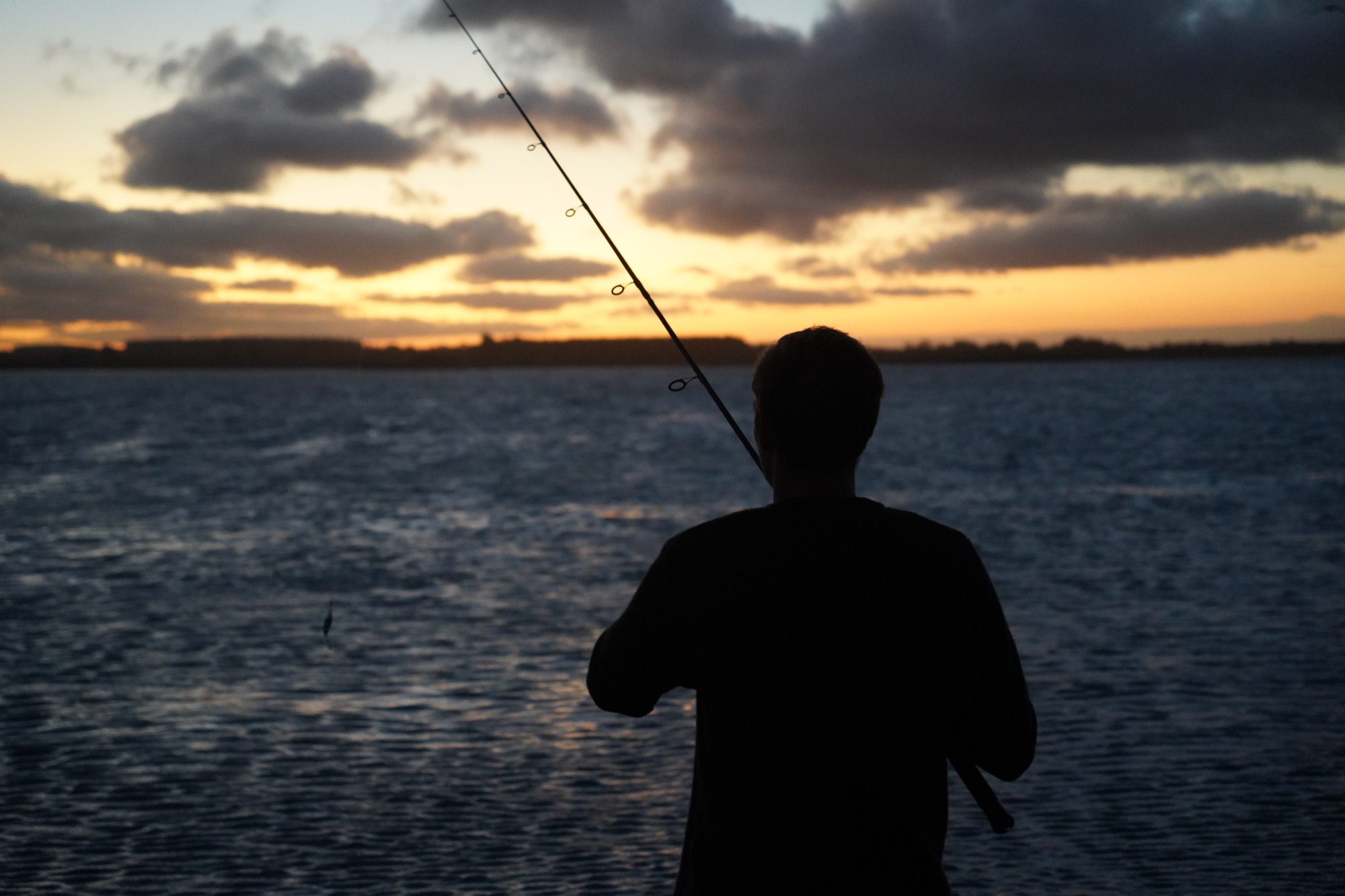
THE SUN & the best time of day for lure fishing
The best time of day for lure fishing is usually dusk and dawn. The lives of fish are heavily affected by the sun and the moon. When the sun is bright and the water clarity is good, it illuminates the water and makes fish more vulnerable to attack both from other fish and from birds. This is why the middle of a sunny day is rarely the best time for lure fishing. On the one hand, bright skies and clear waters make your lures more visible to predators. On the other, the predators can be more cautious. It’s not that predictable but generally bright sunny days aren’t the best.
This is one theory for explaining why fish feed more actively around dusk and dawn, when the light is fading or just returning. The fish might be more confident in reduced light when they are less vulnerable to predation. Different species respond to daylight in different ways. Wrasse and mackerel do not feed at night – wrasse actually sleep – and mackerel swim more slowly and stop feeding. Bass on the other hand feed night and day and are easier to catch at night from beaches. At night bass can enter shallow water without being easy pickings for birds.
Whatever you’re targeting, getting to a mark for the last hours of light and fishing into dusk is usually an excellent time to be fishing in summer. In winter, the greatest rewards often come from fishing at night.
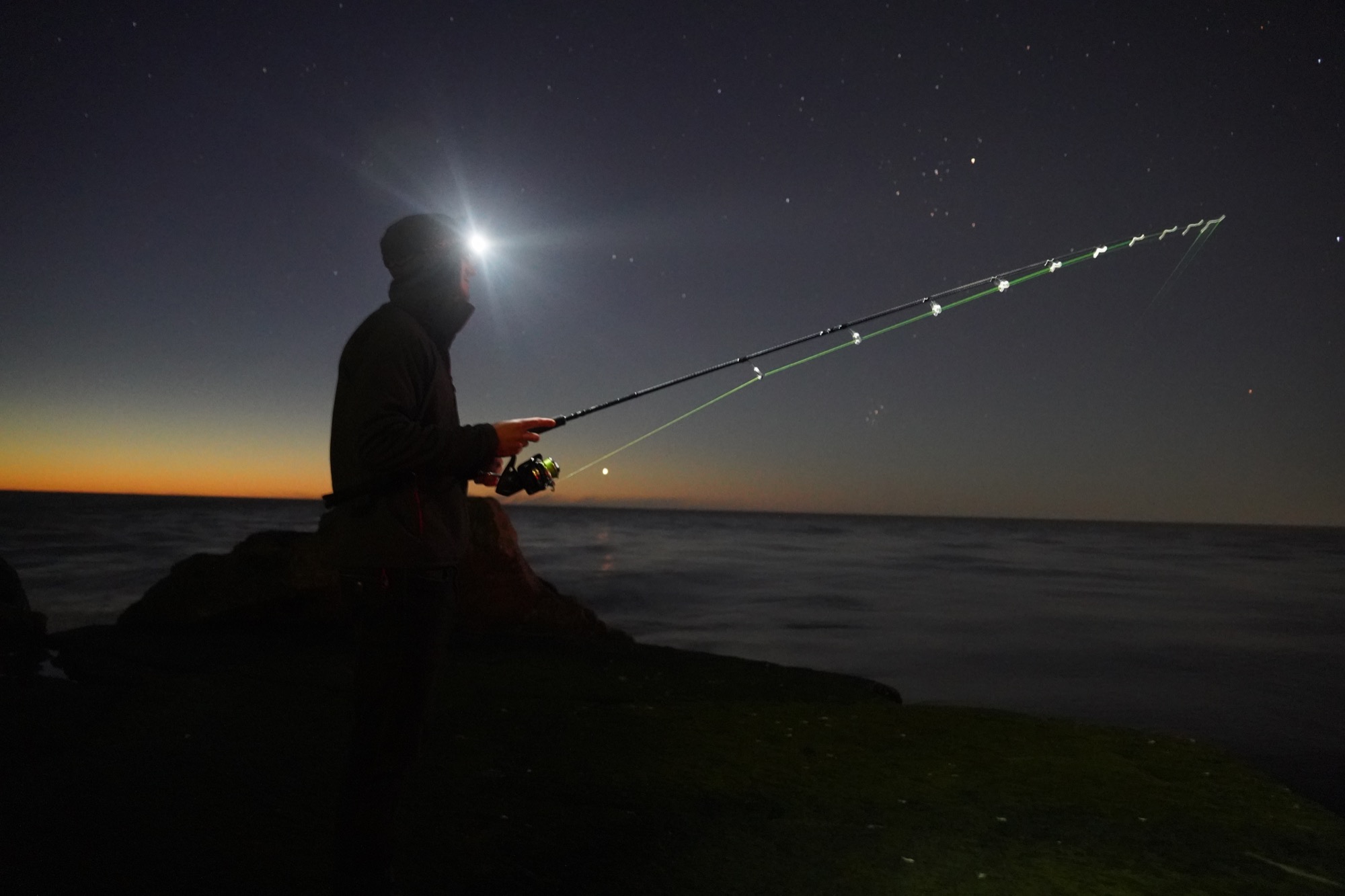
THE MOON & the best tides for lure fishing
The moon has various effects on fish which FISHMAG does not understand. What we do know is that tides are part of the clockwork that fish live their lives by. Consider the way the mullet follow the first sips of tide that slip over the warm mudflats in the summer. The way the bass move through gulleys as soon as they’ve been submerged to feed on little crabs before they’ve had a chance to hide. The way conger leave their holes on a neap tide when the water is motionless to follow the slick left in the water by the dead and dying.
One of the delights of angling is figuring out the tide times that work best at your local marks. For easy fishing it’s best to fish from two hours before to two hours after high tide. It’s also common for some estuaries to fish best during mid water on the push as fish move up the estuary from the sea. There are other spots that fish best around low water.
Experimentation is the best way to find out what works in your area but high tide is almost always better than low tide because the tide pushes in the baitfish and creates larger feeding areas for fish like bass, giving them an incentive to come close inshore. In many marks, there will be pretty much no fish around until high water. Big spring tides create more water movement which many species love, but night fishing for bass is best on neap tides. It’s pretty difficult to draw conclusive patterns.
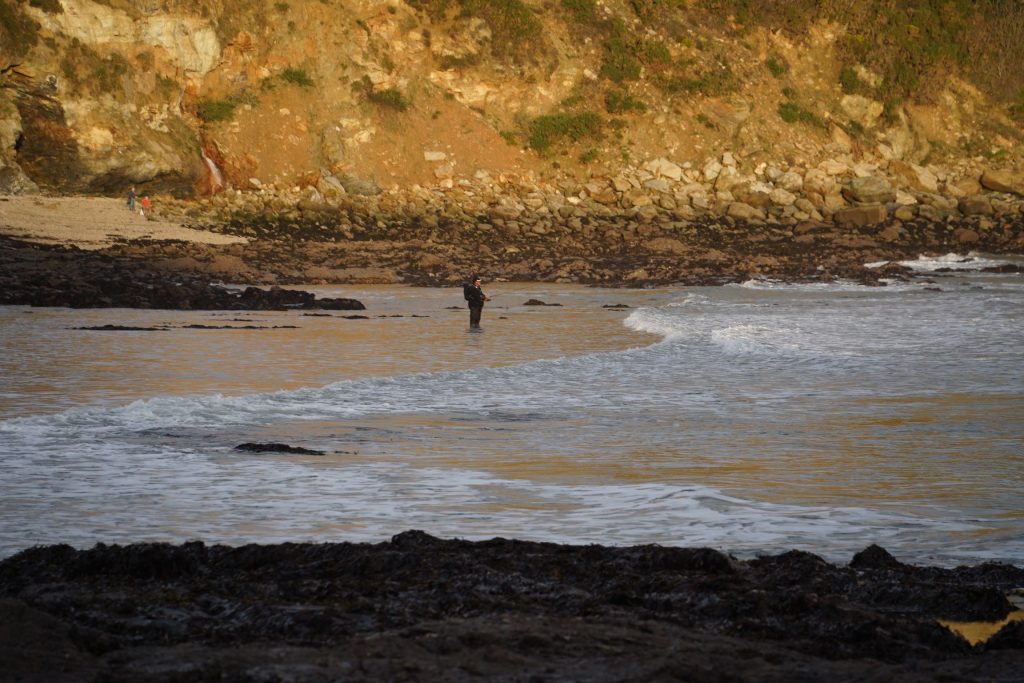
THE SEASONS and when to target each species
Summer lure fishing UK
Mackerel, bass and decent sized pollock are mostly caught from the shore between April and October in the south, and from June onwards in the north of the UK where the water takes longer to warm up. They are caught all year in much lower numbers and are often around in good numbers until December in the south. These are the three staple species of salt water lure anglers, but there are many more. Fishing is much easier in the sea in from late spring to early Winter.
Winter lure fishing UK
Salt water lure fishing slows down rapidly after the end of October in the south of England but often continues into December. By January, the fishing is very different.
Bass are still around but most will be offshore. There are still big bass in the south and west of the UK to be caught year round but the fishing for them requires much more patience. The odd mackerel or decent pollock will be around, especially at deeper water marks. More reliable targets include estuary flounder, which are at their best in winter, and wrasse fishing from the rocks.
There are also runs of scad mackerel and herring in winter. Squid fishing is gaining popularity in the winter in the UK and they are present in your local waters more often than you might think. Cod can be caught all year round if you’re far enough in the North of Britain, whereas in the south they only grace inshore waters in the depths of winter. Around Dorset, they get runs of cod in Autumn, winter and especially spring.
In the months of January to March, it’s common to target freshwater Perch, stocked trout or pike. The pike fishing is at its best in winter when the water oxygen levels are at their highest. The lure fishing set up used for bass is pretty much the same as a pike set up or heavy perch fishing outfit, which makes it easy to switch over into the fresh stuff for a moral boost if you’ve had a couple of challenging sessions on the salt.
Each time you cast your lure of choice into the unimaginable soup, you’re pulling the lever on a living slot machine. You could hook a monster, an average fish or nothing at all.
Fishing is about anticipation – and lure fishing in particular provides a lot of it. It’s the not knowing what you might catch. A splash over there from a leaping fish. A gannet crash diving 200m off shore. A knock on your lure that could have been a fish. And most tantalizing of all – those bites that don’t result in hook ups.
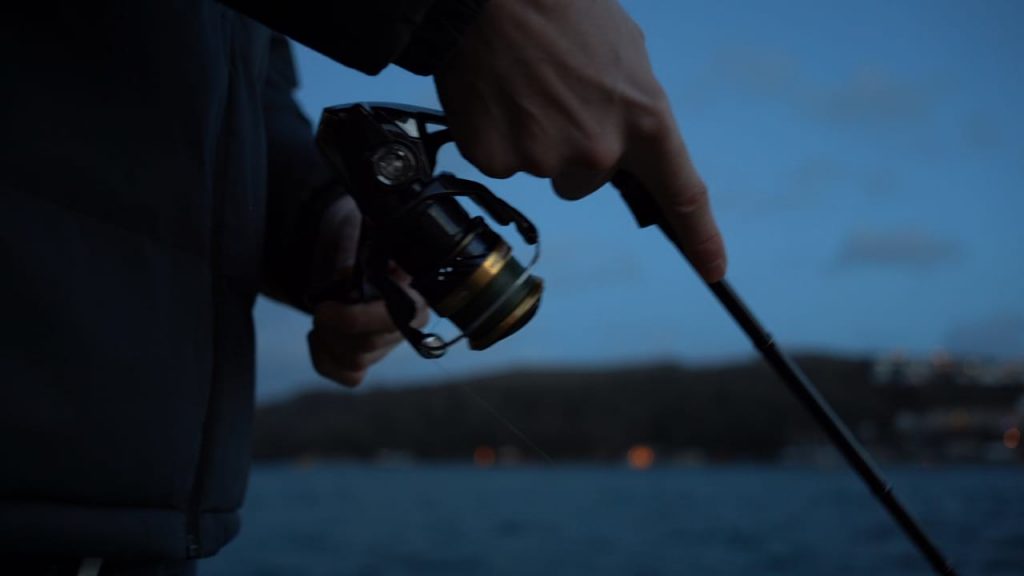
It’s also important to try different types of retrieval. For instance, in particular, it’s worth really slowing down your retrieve a lot. Many anglers on piers around the country will be casting out and immediately retrieving with reels that are large and so bring the lure back so fast that it never has time to sink. It’s better to fish the whole water column from the top to the sea bed.
Once you cast it out, don’t retrieve it immediately, but allow it to fall down the water column. You’ll get most of your takes while your lure is falling, rather than when you’re retrieving it in. For species like garfish, you need your lure to stay high up in the water column, though.
Since modern lure fishing equipment from Japan and the US started being imported into the UK, people’s expectations for the size of lures they would use and the strength of lines and rods changed. Some anglers today are using specialist light lure rods that cast much lower weights than traditional British lure rods and use much lighter lines than were used in the past.
But most lure anglers in the UK are still using all-rounder tackle. An all-rounder spinning set-up is great if you want one rod that can do it all – you can catch mackerel on feathers or target bull huss on the bottom in calm conditions. It’s also harder for beginners to break the rod.
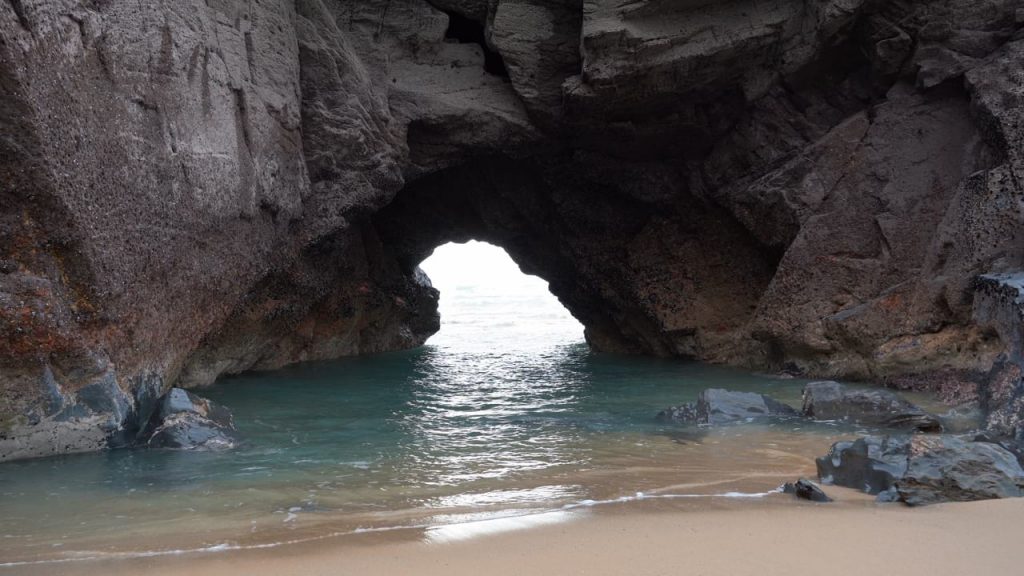
If you prefer to use the same setup for bottom fishing as well as lure fishing, then a classic spinning rod of 10ft that casts 2-3oz is perfect. There’s not a lot you can’t do with a rod like that, save hold the bottom with lead weights in a strong current or fish from a boat.
The straightforwardness of the traditional spinning approach still holds strong appeal today and is the most suitable introduction to fishing for those that want to get out there for the first time. It works. If you’re just starting out in fishing, this is where most people start.
Some will prefer the modern rod for playing fish because it bends more. Others prefer to stick with classics and enjoy being able to do a mixture of bait fishing and lure fishing with one rod. Bear in mind throughout the rest of this article this key difference between the modern and the classic lure fishing approaches.
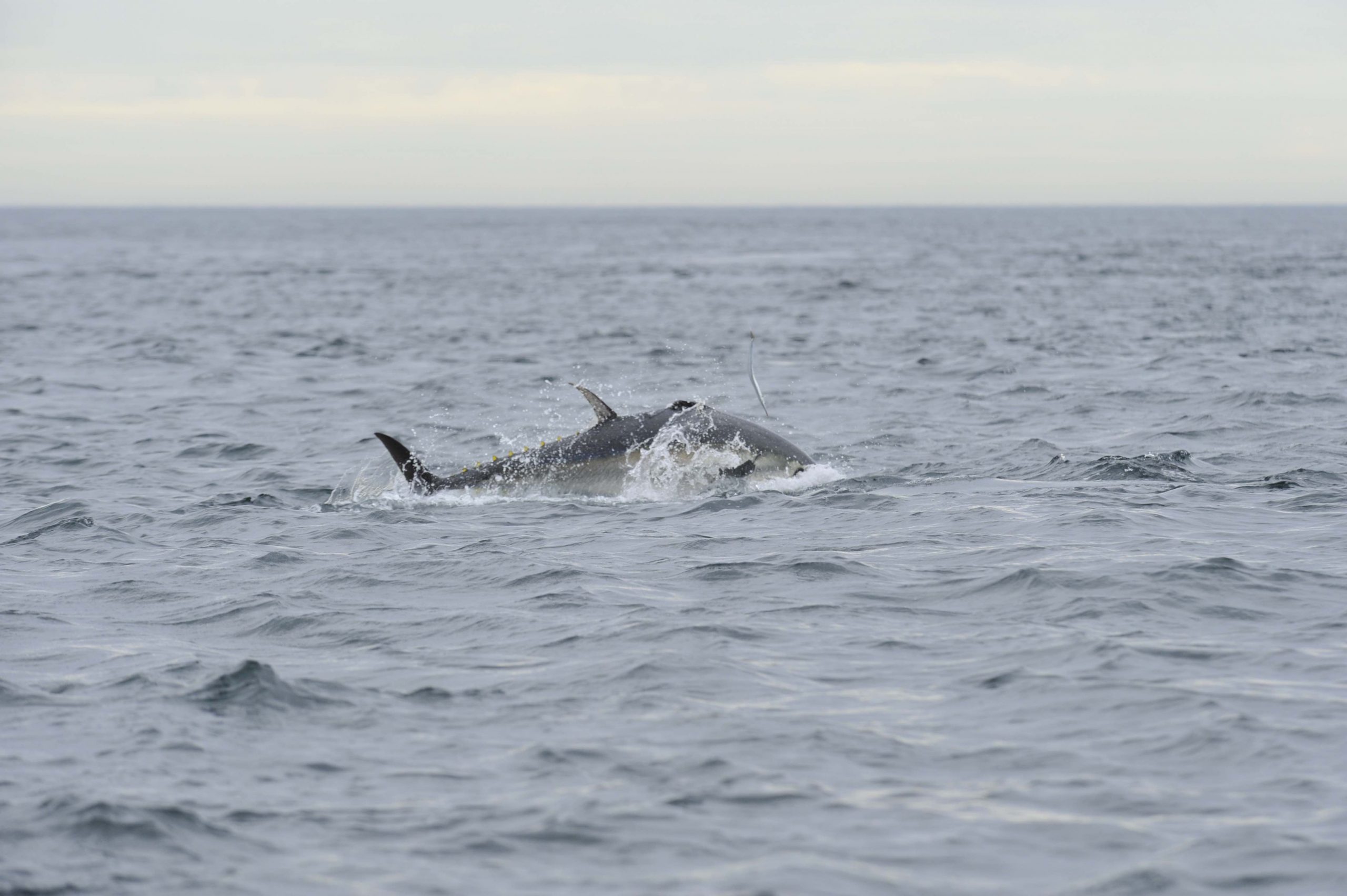
Spinning: the traditional approach
The easiest way to go spinning is to whack on a dexter wedge, go to a rock mark or harbour – anywhere with reasonable deep water – and start fishing.
Shallow watermarks can be good too for bass, but in general deeper water attracts more pelagic species (fish that roam the open seas, like mackerel) which attract larger species to feed on them. Places where you have deeper water and underwater structures, like harbour walls, rocks or wrecks are the most fruitful.
The biggest mistake you can make while spinning is avoiding rough ground for fear of snags. like kelp and rocks. That’s where a lot of the fish hang out! It’s also worth trying to fish closer in as well as further out. Both bass and wrasse will hug the rocks, so a long cast is not always necessary, but can be very beneficial from time to time.
One thing every beginner really must get right is using an appropriate weight. The only occasion it would make sense to use a 3oz+ lead while lure fishing from the shore would be if you’re fishing for mackerel with feathers at a deep water mark or when a very long cast is required to reach the fish. More generally, lighter weights (2oz) will stop your lure from sinking straight into the snags, forcing you to retrieve quickly just to keep it up off the bottom. Sometimes, a lure slowly sinking is absolutely deadly, and you need lower weights to achieve that.
If you use lures like wedges and some toby spoons, you won’t need to use any additional weight to be able to cast your lure. This saves you from tying knots and improves the presentation of your lure to the fish.
Other guides on this site go into more detail on specific spinning methods, the mackerel guide and bass guide may prove useful.
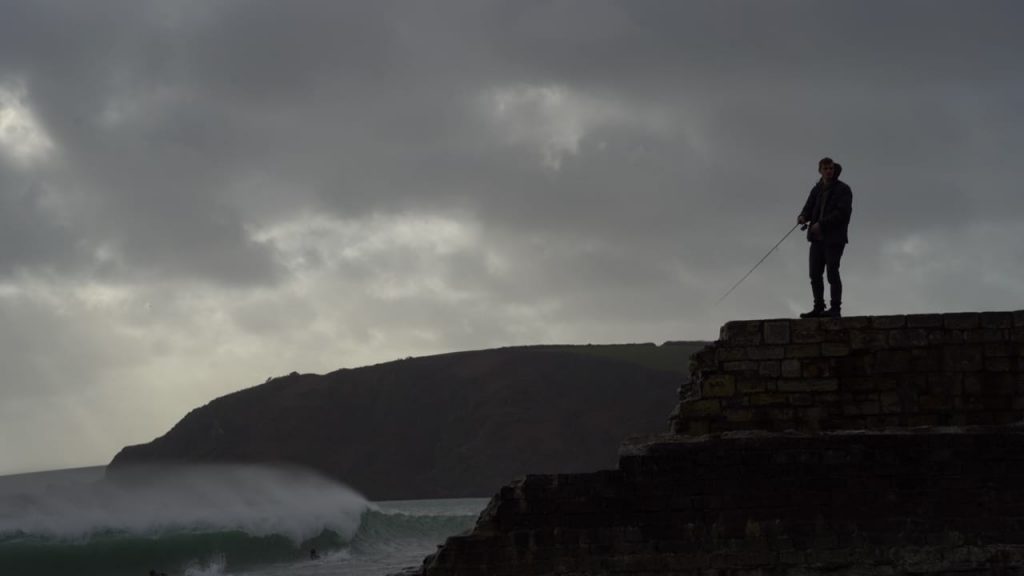
Lure fishing for bass
The shortcut to catching a lot of bass is to buy some reliable kit and then go fishing with someone that has already put in the hours. You can learn much faster fishing with someone that catches a lot of bass than you can trying to figure it all out alone. Catching bass is not at all like fishing for mackerel or pollack. These fish are a lot more astute and your lure presentation needs to be decent, especially for more cautious older fish.
Ultimately, lure fishing for bass is a very simple business.
You explore a stretch of coast, particularly looking out for areas where there is a large amount of water movement. Bass feed on fish lost in the churn – they love white water, currents – basically all the things that make a fishing spot dangerous to fish (so safety is key).
You using a bass fishing set-up that’s light enough to be mobile and effectively cast the 10-30g lures you will be using.
You find a few places on Google Earth that look promising and fish there at different times and states of tide, experimenting with various retrieval styles and lure types.
After a while, you start to notice patterns and get in the groove. Then, you blank much less often and eventually join the very small group of committed anglers that catch hundreds of bass a year.
Progress in bass fishing means gradually controlling the variables – timings, tides, lure presentations – pushing luck into an increasingly small corner.
Once you’ve controlled the big things – you’ve got a decent fishing set up, your knots are strong and you know what at what state of tide your mark works, what lures and retrievals different species prefer etc, the rest is just subtle little things that I’m not sure can be communicated. If you want to accelerate the process of learning these subtle tricks, you can do that by fishing with obsessive anglers and imitating them.
Boat fishing with lures
Owning or hiring a boat opens up a lot of angling opportunities. The fish you can catch are in a different league for size and power, and your ability to change locations if the fishing is poor in one place give you a markedly unfair advantage over shore anglers.
Boat fishing with lures is a whole different beast from lure fishing from the shore. Unless you’re fishing closer in around the coast, you’ll be using shorter, heavier rods, stronger lines and you may need to use multipliers so you can hold enough line to get your lure down over the wreck or seabed.

Much of the skill with boat fishing is learning about the best places, the best timings, using fish finders etc. A good skipper can very often put anglers directly over the fish, give them a rod and lure that’s known to work and effectively set people up for some excellent fishing. See my boat fishing guide for general boat fishing advice.
Two popular approaches for boat fishing include drifting over a mark known to hold fish or anchoring up and jigging directly down the side of the boat. Drift fishing allows you to cover more ground and helps your lures to move very naturally with the current. If you’re fishing over a wreck you need to know where the thing is so you can drift just alongside it. Drifting over sand banks with lures also works well for plaice and a huge number of other species.
Jigging
Jigging involves anchoring a boat and fishing directly down the boat, dropping your lure down the water column and then lifting your rod with large motions to bring the lure up, before allowing it to fall back down again. This is extremely effective for squid. In the Med, you will often see boats out with bright lights shining into the water. These may be squid jigging boats since the light is used to draw the squid in.
Jigging also works for a huge number of other species and is incredibly straightforward. You are effectively letting your lure fall, lifting it back up and then letting it fall again, over and over. Simple and tremendously effective, since fish love a falling lure.
HRF
Hard rock fishing is primarily used for targeting wrasse in the UK, often when bass aren’t biting. These fish are targeted most effectively with a texas rig, a simple straight-tailed soft plastic and weedless hook. It’s very important that the soft plastic is rigged on the hook carefully, so that the soft plastic maintains its natural shape, not being stretched, warped or twisted. This is because a piece of plastic that spins around in the water or looks very unnatural in the way it moves will put fish off.
Deadsticking: the secret to catching more fish on lures
The key skill in wrasse fishing is imparting less motion into your lure. Wrasse respond very well to deadsticking – simply casting out a lure and doing nothing to it. If there are wrasse in the area that have seen the lure fall down into the kelp, they will swim over to investigate, and very often will pick up the lure and smash it to bits. Typically, Wrasse anglers will cast, and leave the lure to hit the seabed. Wait for about 30 seconds if they’re patient enough, then lift it up and reel for a few seconds before repeating the process. You can also twitch the lure slightly while it’s sat on the bottom, but you should try not twitching too, as sometimes lure movement acts as a deterrent. This is quite a radical idea for a lot of anglers because it used to be thought that fish like bass were like dinosaurs in Jurassic Park – only able to see prey as they moved. This is not the case. Anyway, even if the angler doesn’t move a lure, water movement will, so a lure sat on the bottom isn’t necessarily static.

Why do Wrasse hit lures?
There is an interesting debate around why Wrasse hit lures, given that for a long time they were considered merely the bycatch of bait fishermen. Unlike pelagic species like mackerel which roam the open seas, wrasse are territorial. All wrasse are born female, and then when they reach a certain age (and size), which can be considerable (they live for decades), some will change sex and become male. These larger males are very territorial of their females, so it’s possible they hit lures because they simply don’t want some random UFO lure near their slimy harem.
I do not subscribe to this theory, I think they clearly rely on both scavenging for food as well as actively hunting prey fish when they get the chance. I have heard of divers reporting seeing wrasse smashing into shoals of sandeel, and I think I may have seen this at some point too. Primarily, they feed on small crabs and shellfish.
LRF & Modern Japanese Lures
Light rock fishing is the lure fishing method that many expected to transform fishing in the UK forever after it emerged in the UK in the late 2000’s It involves the use of ultra-light rods that cast up to 10g (1/3 oz) and very small lures. Because the lines are so thin and the rod so light, it’s possible to cast just as far as you would with a traditional set-up, or even further in some cases.
Light rock fishing – opens doors in angling we didn’t know were there
In an estuary, a bass angler might be casting and retrieving a Fiiish Minnow or plug, and will be able to hook bass and pollack. An LRF angler can cast out a plastic worm, bounce it along the seabed and catch gurnard, flatfish, pollack, bass, and a whole lot more.
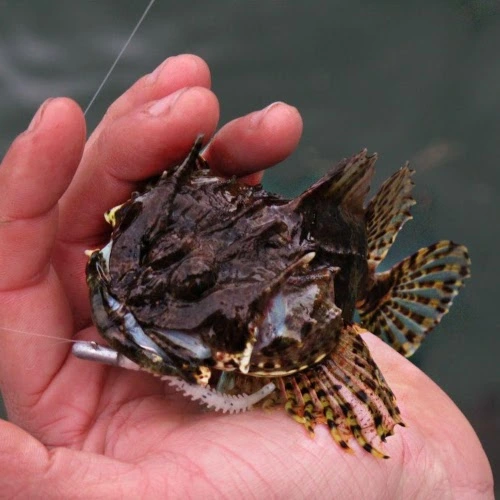
LRF fishing allows you to use lures that imitate worms and do so with finesse. This changes what’s possible with lure fishing.
Lures can be presented to fish with a far higher level of control than is possible with any other angling method, which is why LRF is associated with ‘finesse’ and in that sense, is more akin to fly fishing than traditional bait fishing or lure fishing.
In Japan, the US, Aus and many cities in Europe like Paris, this kind of approach to fishing is considered much more normal and they don’t refer to it as LRF. In Hong Kong, they don’t think of this as some modern, strange type of lure fishing, it’s just lure fishing. But, in the UK, we are addicted to using heavier rods, even when most of the fish we catch do not require it. If you think about a typical summer fishing trip, very few of the fish you catch will be over 2lb. It’s normal for anglers to overestimate the size of their catch, but a pretty decent shore-caught pollack weighs 1lb. A good wrasse is 3lb, but can reach more like 6lb. Bass above 3lb are very good fish, and you don’t tend to catch them unless you are specifically targeting them with larger lures. Therefore, the shortcomings of LRF kit for targeting and playing British fish species are almost non-existent.
The limitations of LRF fishing
LRF is my chosen method for targeting pollack and mackerel from the shore, as well as the catching of mini species. I’ve caught over 40 species on an LRF rod in the UK, which gives you an idea for the range of species that can be caught in this way. I do not think it advantageous to use an LRF rod for actively targeting bass or wrasse, since the number of lost fish will go up, even if you are highly skilled. Wrasse bolt into the kelp every time you hook them. Even a 2lb wrasse cannot be stopped with an LRF rod, only steered away from snags. If you hooked a 5lb wrasse on an LRF rod, your chances of landing it would be slim, and if you did, it would not be down only to skill, you need a good deal of luck also.
My preference for a versatile set-up for British lure fishing would be an 8ft rod that casts 20g. This is light enough to get very good sport from most fish, but has the power to be able to have some degree of control over decent bass and wrasse too.
Balanced LRF set ups are essential
It’s important to note that LRF setups are very dependent on balanced tackle in order to function properly. If you put 6lb monofilament on an LRF set up, that’s likely to cause trouble because it’s too thick. It would restrict your casting distance and make you more prone to tangles. You would also miss out on the benefits of the sensitivity of the rod, since mono stretches, giving reduced bite sensitivity (though it can be useful when stretching in a line is preferable). If you bought a very small reel from a more traditional, trusted company like Penn, it would not fit properly on a Japanese ultra light rod, even if it was labelled as being 2500 size. This is because the diameter of the line lay (which is determined by the diameter of the bail arm), is likely to be too large for the size and position of the rod eyelets. For this reason, when you buy a fancy LRF rod, you need to buy the full works to go with it, including a comparably modern reel designed with ultra-light fishing in mind. Shimano and Daiwa are safe bets.
Watch out for copycats
It’s also worth noting that part of the success of LRF fishing is down to the superiority of the design and materials used. When mass market companies release an ‘LRF Rod’ it’s often not built to a high standard and is essentially just a traditional style rod that’s been made very thin and light. A Japanese LRF rod will have power in the butt of the rod for steering fish, as well as a fast action that allows for the effective casting of tiny lures. Many rods that are marketed as LRF rods would not be capable of casting lures under 5g, they are just light spinning rods.
In other words, if you’re going to get into LRF, go all the way – don’t dabble!
Why some anglers like LRF:
- Fishing with highly sensitive, sporting rods is extremely fun and doesn’t compare to anything else.
- LRF anglers catch far more fish, because there’s almost always a fish species there that can be effectively targeted.
- LRF anglers catch more sporting fish like bass, wrasse, mackerel and pollack because lures can be presented more carefully and naturally than is possible with heavier lines, weights etc.
- Light rock fishing forces you to think a lot more and fish more intentionally. The rod is giving you more feedback (feeling the bottom, feeling what type of kelp your lure is sat on). This makes it more engaging for many.
- Light tackle makes moving spots and mobility easier, so you can cover a lot more ground
- Light tackle makes your life simpler because your tackle takes up a lot less space
Lure fishing Q&A
How can I lure fish for Flounder?
Lure fishing for Flounder involves bouncing or dragging small spinners along the seabed and is particularly good in winter when little else it biting. Try tipping your spinner with a ragworm or worm imitation.
Can I lure fish at night?
Lure fishing in the sea is often better at night time than in the day in the winter, but in the summer the daytime is more fruitful.
Can I lure fish in winter UK?
Lure fishing in the winter is tougher, but many species are around still, including bass, just in lower numbers. Some species are more plentiful in winter than summer, like herring. Try utilising the guides on this site to target a wider range of species to increase your chances of catching in winter.
Is it hard to learn to lure fish?
It’s easy to start fishing, but to catch a lot of fish often you need to invest a lot of time or go fishing with experienced anglers to learn the ropes.
The best braided fishing lines, ranked
The best braided fishing lines, ranked We look at the best braids, from the budget…
The best bass rods | Finding your next stick
The best bass rods | Finding your next stick The most common bass fishing setup…
The UK’s Best Bass Lures
The UK’s Best Bass Lures Let’s start by looking at the three bass lures that…
The Ideal Beginner’s Lure Fishing Set-Up
The Ideal Beginner’s Lure Fishing Set-Up Let’s break down each part of a lure fishing…
Rock Fishing with Lures
Rock Fishing with Lures You’re sat, perching on a rock below a colony of cormorants….
A Brits Guide to Travel Rods
A Brits Guide to Travel Rods Fishmag is reader-supported and earns commissions from affiliate sales,…

